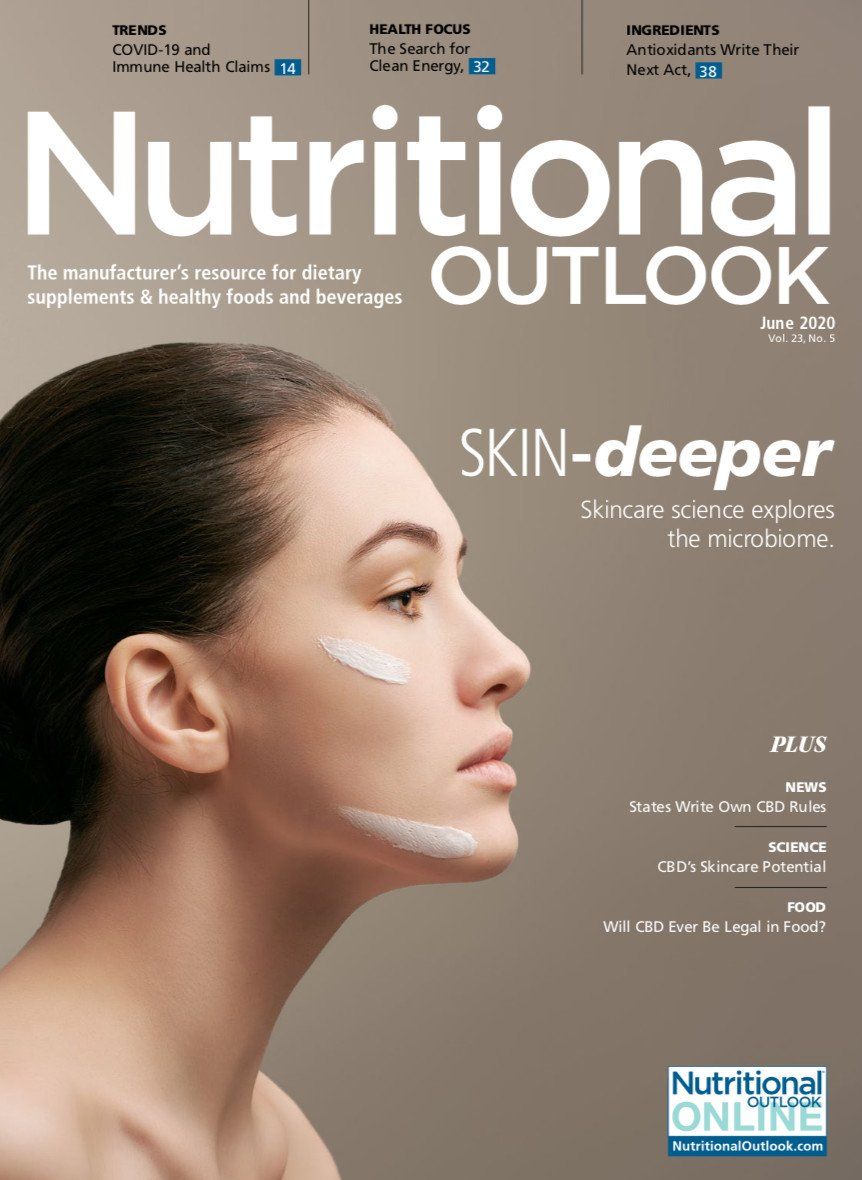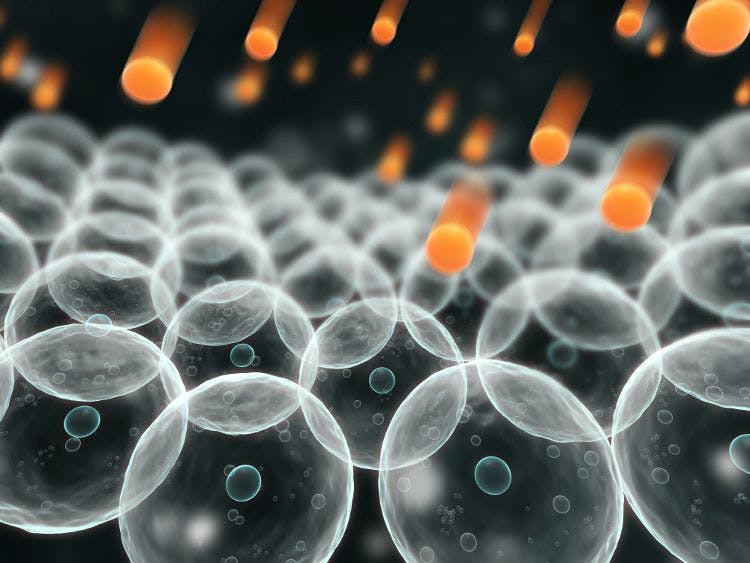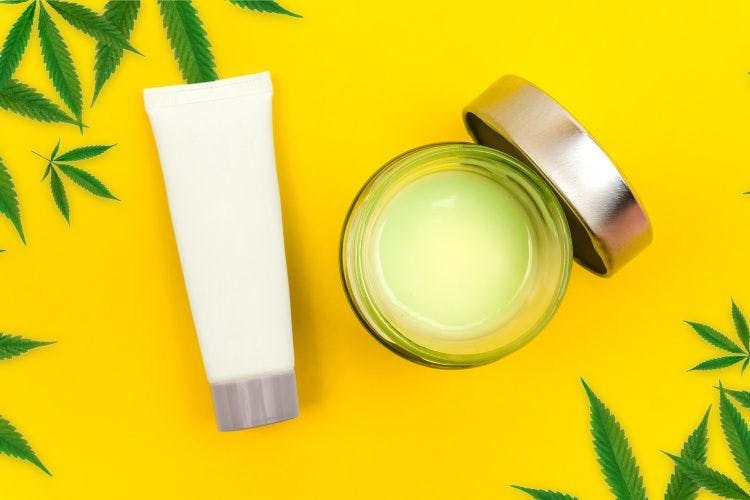The search for cleaner-energy ingredients continues
There’s no regulatory definition for the term "clean energy" in the food, beverage, and dietary supplements space. But that doesn’t mean there aren’t responsible ingredient suppliers defining the category.
Photo credit © Microgen - Stock.adobe.com

There’s no regulatory definition for the term clean energy in the food, beverage, and dietary supplements space. But that doesn’t mean there aren’t responsible ingredient suppliers defining the category, developing standards based on partnerships with finished product manufacturers (and ultimately demand from consumers), and then doing due diligence to ensure their standards are met and their promises are delivered.
And that hasn’t stopped consumer interest in a category that Brian Zapp, director of marketing, Applied Food Sciences (Austin, TX), refers to as “a movement,” one that he believes is evolving with the consumer base.
Brian Appell, director, global communications, OmniActive Health Technologies (Morristown, NJ), points to Nutrition Business Journal’s “2019 Condition-Specific Report,” which placed the energy supplement category at $4.3 billion, representing nearly 10% of supplement market sales. And supplements are just one of the categories that include energy ingredients.
According to Lu Ann Williams, director of innovation for market researcher Innova Market Insights, new product launches in the U.S. market featuring energy/alertness claims in the food and beverage category (including supplements) grew by 12% from 2015 to 2019.
Williams further advises that clean labels and natural energy concepts are on the move. Based on labels from new product launches in the food and beverage and supplement space, she reports an increase from 2015 to 2019 in use of the following attributes: “no additives/preservatives” (up 17%), “GMO-free” (up 13%), “gluten-free” (up 13%), and “natural” (up 9%).
Appell points out that the clean-energy category “continues to evolve as consumers redefine what clean means to them.” As an example, he refers to sugar, which he says by all accounts is considered natural but “has become a target to avoid by many scrutinizing consumers.”
The Appeal of Clean Energy
Without a clear-cut regulatory definition, is clean the new natural, a marketing term that appeals to consumers because it represents seemingly healthy lifestyle choices and earth-friendly values that especially appeal to up and coming generations of Americans?
“Defining clean energy may also come down to the source of the active and what other ingredients or excipients are used to make the product,” says Appell. “For example, OmniActive’s Xtenergy is naturally sourced from coffee beans using a natural extraction process and a solvent-free coating. Traceability and sustainability may also check a box for clean energy as consumers continue to weigh their purchase decisions against how they impact people and the environment.”
Marianne McDonagh, vice president, sales, Bioenergy Life Science (Ham Lake, MN), says her company “defines clean-energy ingredients as all encompassing; in other words, clean ingredients are all natural, clean label, third-party quality tested, and sourced from a consistent and transparent supply chain from batch to batch.” The company’s Bioenergy Ribose, a fully soluble, versatile, unique five-carbon carbohydrate and a staple ingredient for more than 30 years, exemplifies these standards, says McDonagh.
She’s also on board with growth in the category, verifying that “from our own sales data within the past 12 months, demand for clean-label, energy-enhancing ingredients has increased steadily.”
Applied Food Sciences, too, is energized by where it sees clean-energy products going. Zapp indicates that the company’s clean-energy/focus ingredients account for about 70% of its customer inquiries. With four ingredients in this category—including PurCaf Organic Caffeine, a highly water soluble, organic powdered extract, standardized at 95% pure caffeine and extracted from green coffee beans—Zapp views the term clean as a philosophy of what his company strives to accomplish.
“In all practical functions, the philosophy driving the clean label is really that evolution of ‘free-from,’” Zapp says. Does the label have 40 ingredients with long chemical names that require 30 trips to Dictionary.com to understand? “I think the proof of a clean label is in the pudding,” he says.
When it comes to his company’s philosophy, Zapp focuses beyond the label. “We define clean as aligning with the entire demonstration of the transparency as a whole. We want to make sure we’re providing clean ingredients from the seed all the way to the label. It’s the bigger picture of it all,” he says.
Added Functionality Fuels Clean-Energy Market
Zapp cites added functionality as a key trend to hit the clean-energy market. Referring to products that go beyond the initial function of energy drinks, he uses an example that might appeal to someone in an office job: the addition of branched-chain amino acids (BCAA) in combination with caffeine, providing functionality for mental focus.
“Physical energy is important to consumers, but equally important, and even more so according to some experts, is mental energy,” says Appell.
He refers to a November 2019 Euromonitor report noting that energy drinks are popular with consumers because they provide a mental boost during their busy day. But, Appell points out, the report also indicates that the energy category is evolving beyond just the boost, that formulas are targeting more specific benefits like mental focus and alertness.
RiaGev, Bioenergy Life Science’s latest propriety ingredient formulation, also fits the added functionality trend. McDonagh says that although the ingredient focuses more on healthy aging than just energy, “it was inspired by our desire to develop a product that controls metabolism while enhancing energy.” By combining Bioenergy Ribose with nicotinamide, an ingredient that delivers unique cellular benefits which promote healthy aging, RiaGev boosts energy while balancing the stress associated with energy production, says McDonagh.
Zapp mentions a second trend that involves companies marketing premium energy products that take a holistic, simplistic, minimalistic, and clean approach.
“You’d be looking for six ingredients or less, very clean in nature, a sparkling water energy drink. A little bit of flavor, no sugar, no carbs, zero calories, organic certified, but still with caffeine. Cleanly presented,” says Zapp.
Marketing to the Millennial Mindset
According to Zapp, Millennials were responsible for the explosion of energy drinks back in the late nineties. Today, he believes, those same Millennials, now older and more mature, with families, and money to burn, are also the drivers of the clean-energy market.
“The market has evolved with the consumer base,” he says. And that evolution is a revolution of sorts. Millennials’ more settled lifestyles have converted their interest from these “very loud, monstrous energy drinks, more geared for hanging out with your buddies,” says Zapp, to energy products that fit their new station in life.
Millennials don’t want to leave the energy category because, Zapp says, “They’re accustomed to energy drinks.” But, he adds, “they’re evolving into something that’s more natural looking, maybe something with a tea-based caffeine.”
Another piece of the puzzle for Millennials, says Zapp, is transparency and authenticity. “There is a really deep-rooted experience that Millennials have about lack of trust or skepticism with the capitalistic mindset. And so, the more manufacturers say, the less these consumers are inclined to believe it.” Zapp recognizes it’s a tricky audience to market to because if you’re trying to sell a premium product, you want to talk about what makes it premium. But with a skeptical consumer base, he advises “show me, don’t tell me.”
“We’ve had a couple of our customers come with us to our organic coffee farm in southern India,” says Zapp. “They bring their own videographer with them and capture them helping with the harvest and talking with pickers and farmers—demonstrating ‘this is where your caffeine comes from, where your key active is sourced.’”
In turn this allows consumers to hear and see a story, to couple their values with the products they’re researching. “And now,” says Zapp, “the consumer starts to tell their own story about [the brand]. They start to build their own trust value in it and are more inclined to share it with others as well.”
The Yin and Yang of Caffeine
Caffeine can be considered king of the energy category. Citing research from Innova Market Insights, Zapp notes that caffeine is still the go-to choice to energize, with caffeine representing 34% of new food and beverage (including supplements) launches tracked with energy/alertness claims in the U.S. in 2019.
Delivery methods are increasing, too. Says Zapp, “people are trying to figure out a way to get caffeine into everything. That’s certainly one area of innovation.”
And while caffeine’s not likely to be dethroned any time soon, “Companies are looking for alternative options in their formulations besides caffeine, because consumers are driving this new demand,” says McDonagh. Bioenergy Life Science’s two energy-related ingredients, Bioenergy Ribose and RiaGev, are both caffeine free.
Appell concurs about caffeine’s popularity, calling it “the most popular commodity for energy.” But, like McDonagh, he sees a consumer demand in the making.
To fill that demand, innovators are producing caffeine ingredients that maintain the benefits of caffeine—increased energy, decreased fatigue, and improved focus and concentration—but without the detrimental side effects such as jitters and crashes.
In short, Appell says, “Companies are developing solutions to make ingredients like caffeine work better.”
His firm developed Xtenergy to preserve the nootropic effects of caffeine and avoid the undesirable effects. Says Appell, “OmniActive’s Xtenergy sustained-release caffeine is built on a spray-melt technology that provides a very consistent payload of natural caffeine over an eight-hour time period, without reported jitters, tenseness, or crash typically experienced with instant-relief caffeine.”
However, Appell also notes the need to innovate with caffeine-free ingredients. “Consumers are increasingly looking for alternatives to caffeine that can deliver the same effects. This is, perhaps, the biggest area of innovation because caffeine itself is highly commoditized, and new formulas offer new opportunities to differentiate with unique benefits.” OmniActive offers enXtra, made from a proprietary blend of Alpinia galanga, a commonly used spice in Asian cooking, as that caffeine-free alternative. Appell advises that several studies have shown that enXtra provides a same-day effect in supporting mental energy, specifically alertness and better focus.
Applied Food Sciences’ clean-energy ingredients all contain caffeine, but in a nod to innovation, the company’s Amatea Organic Guayusa Extract is standardized at 20% caffeine and is extracted from an Amazonian super-leaf that is a cousin to yerba mate, but with more antioxidants. Zapp says that with guayusa, there is a mechanism triggered which helps slow down the fluttery, anxious feelings some people get from caffeine.
Science Drives Innovation, Safety, Category Growth
For any product category that includes products that are consumed, a dedication to scientific research and science-based principles may not be considered trendy but should be considered as a foundation that drives the category forward. It’s science with a twist that drives innovation.
Appell is interested in science for specific benefits, claiming that “energy is no longer the benefit. It’s what energy means to the consumer that needs to be supported by science.” He explains: “Consumers are looking for specific benefits that suit their current needs. Whether it’s mental energy or physical energy, companies are starting to define their energy solutions by those benefits.”
Zapp is most intrigued by a human clinical trial his company is currently conducting in the eSports community of competitive, organized video gamers, a population that requires keen focus, steady energy, and mental stamina to succeed. Specifically, the research study population is Fortnite players, with the intention to compare guayusa to other caffeine sources and placebo, with results covering overall game performance, accuracy, reflexes, memory recall, and more. The trial is expected to be completed this year.
Bioenergy Life Science adds another consideration for innovation. “Focus upon research continues to drive innovation in the category with scientific methods and standards that are closer to the pharmaceutical model,” advises Michael Crabtree, ND, the company’s director of science. “The natural progression of research through animal testing into human testing, the acquisition of feedback, and carefully modeling the potential for adverse events prior to marketing campaigns ensures safety to the end user. The European model for regulating dietary supplements is probably closer to what the U.S. will see in the future.”
Whatever the future holds for energy products, the “clean” concept appears to have sustainability.


.png&w=3840&q=75)

.png&w=3840&q=75)



.png&w=3840&q=75)



.png&w=3840&q=75)


















